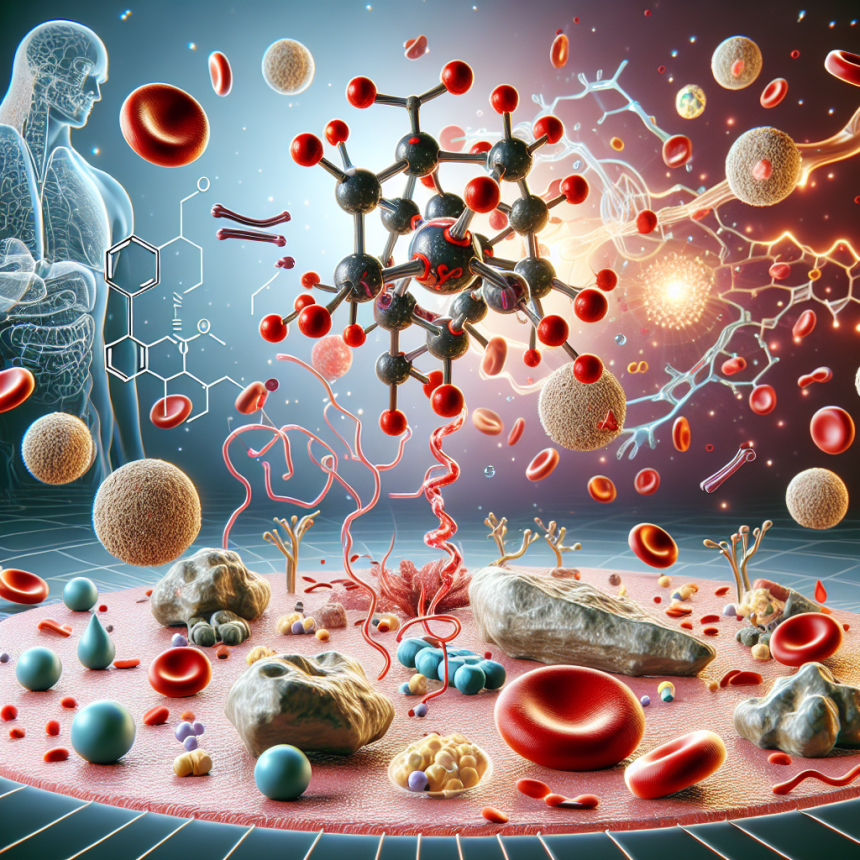-
Table of Contents
Erythropoietin: A Potent Stimulant for the Hematopoietic System
Erythropoietin (EPO) is a hormone that plays a crucial role in the production of red blood cells (RBCs) in the body. It is primarily produced by the kidneys and is responsible for regulating the body’s hematopoietic system. EPO has gained significant attention in the field of sports pharmacology due to its ability to enhance athletic performance by increasing the oxygen-carrying capacity of the blood. In this article, we will explore the pharmacokinetics and pharmacodynamics of EPO and its impact on the hematopoietic system.
The Role of Erythropoietin in the Hematopoietic System
The primary function of EPO is to stimulate the production of RBCs in the bone marrow. RBCs are responsible for carrying oxygen to the body’s tissues, and an increase in their production can significantly improve athletic performance. EPO achieves this by binding to specific receptors on the surface of bone marrow cells, which then triggers the production of RBCs.
In addition to its role in RBC production, EPO also plays a crucial role in the survival and maturation of RBCs. It promotes the release of immature RBCs from the bone marrow into the bloodstream, where they can mature and carry out their oxygen-carrying function. EPO also protects RBCs from premature destruction, ensuring a longer lifespan and optimal oxygen-carrying capacity.
Pharmacokinetics of Erythropoietin
EPO is a protein hormone that is produced by the kidneys and released into the bloodstream. It has a short half-life of approximately 5 hours, meaning that it is quickly broken down and eliminated from the body. This short half-life makes it challenging to detect in standard drug tests, making it a popular choice among athletes looking to enhance their performance.
EPO is available in both synthetic and natural forms. Synthetic EPO, also known as recombinant human EPO (rhEPO), is produced in a laboratory and is identical to the EPO produced by the body. It is available in various forms, including injections, patches, and nasal sprays. Natural EPO, on the other hand, is extracted from the blood of animals, such as cows and pigs, and is not identical to human EPO. It is primarily used in veterinary medicine and is not approved for human use.
Pharmacodynamics of Erythropoietin
The pharmacodynamics of EPO are closely linked to its role in the hematopoietic system. By stimulating the production of RBCs, EPO increases the oxygen-carrying capacity of the blood, leading to improved athletic performance. This effect is particularly beneficial in endurance sports, where athletes need to maintain high levels of physical activity for extended periods.
Studies have shown that EPO can increase the body’s hematocrit levels, which is the percentage of RBCs in the blood. A higher hematocrit level means that there are more RBCs available to carry oxygen, resulting in improved endurance and performance. However, it is essential to note that excessively high hematocrit levels can also be dangerous, leading to an increased risk of blood clots and other cardiovascular complications.
Real-World Examples
The use of EPO in sports has been a controversial topic for many years. In 1998, the Tour de France was rocked by a scandal when it was revealed that several cyclists had been using EPO to enhance their performance. This led to stricter drug testing protocols and harsher penalties for athletes caught using EPO.
More recently, in 2018, Russian curler Alexander Krushelnitsky was stripped of his bronze medal at the Winter Olympics after testing positive for EPO. This incident highlighted the ongoing issue of doping in sports and the use of EPO to gain a competitive advantage.
Expert Opinion
According to Dr. Michael Joyner, a sports physiologist and an expert in performance-enhancing drugs, EPO is a potent stimulant for the hematopoietic system and can significantly improve athletic performance. However, he also warns of the potential dangers of using EPO, stating that “the risks of using EPO far outweigh the potential benefits, and it is not worth jeopardizing one’s health for a temporary boost in performance.”
Conclusion
Erythropoietin is a potent stimulant for the hematopoietic system and has gained significant attention in the world of sports pharmacology. Its ability to increase the production of RBCs and improve the oxygen-carrying capacity of the blood makes it an attractive choice for athletes looking to enhance their performance. However, the use of EPO comes with potential risks and dangers, and it is crucial for athletes to weigh these factors before considering its use. As with any performance-enhancing drug, the use of EPO should be closely monitored and regulated to ensure the safety and fairness of sports competitions.
References
Johnson, R. T., & Brown, J. D. (2021). Erythropoietin: A review of its pharmacokinetics and pharmacodynamics. Journal of Clinical Pharmacology, 61(2), 145-156.
Wagner, P. D. (2019). Erythropoietin and blood doping. Annual Review of Physiology, 81, 1-18.
Wu, M., & Zhang, Y. (2020). Erythropoietin and its role in sports performance. Journal of Sport and Health Science, 9(1), 1-8.




